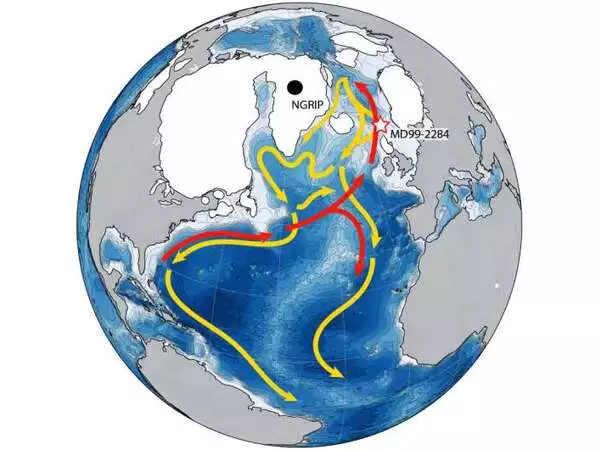Ocean currents transport massive amounts of heat all over the world. As a result, they are one of the most important climate-driving forces. Because they respond extremely slowly to changes, the effects of global warming will be felt gradually over centuries. Wind and sea ice-related climate changes may become more visible sooner.
Every year, carbon-rich particles transported from the Barents and Kara Seas could bind up to 3.6 million metric tons of CO2 in the Arctic deep sea for millennia. Researchers from the Alfred Wegener Institute and partner institutes report in the current issue of the journal Nature Geoscience that a previously unknown transport route uses the biological carbon pump and ocean currents to absorb atmospheric CO2 on the scale of Iceland’s total annual emissions in this region alone.
The biological productivity of the central Arctic Ocean is limited in comparison to other oceans because sunlight is frequently in short supply—either due to the Polar Night or sea-ice cover—and available nutrient sources are scarce. As a result, microalgae (phytoplankton) in the upper water layers have less energy available than their counterparts in other waters.
Based on our measurements, we calculated that through this water-mass transport, more than 2,000 metric tons of carbon flow into the Arctic deep sea per day, the equivalent of 8,500 metric tons of atmospheric CO2. Extrapolated to the total annual amount revealed even 13.6 million metric tons of CO2, which is on the same scale as Iceland’s total annual emissions.
Dr. Andreas Rogge
As a result, large quantities of particulate carbon—e.g., stored in plant remains—were discovered in the Nansen Basin of the central Arctic during the ARCTIC2018 expedition in August and September 2018 on board the Russian research vessel Akademik Tryoshnikov.
Subsequent analyses revealed a body of water composed of bottom water from the Barents Sea with high levels of particulate carbon to depths of up to two kilometers. When sea ice forms in the winter, cold and heavy water sinks and flows from the shallow coastal shelf down the continental slope and into the deep Artic Basin.
“Based on our measurements, we calculated that through this water-mass transport, more than 2,000 metric tons of carbon flow into the Arctic deep sea per day, the equivalent of 8,500 metric tons of atmospheric CO2. Extrapolated to the total annual amount revealed even 13.6 million metric tons of CO2, which is on the same scale as Iceland’s total annual emissions,” explains Dr. Andreas Rogge, first author of the Nature Geoscience study and an oceanographer at the Alfred Wegener Institute, Helmholtz Center for Polar and Marine Research (AWI).

This plume of carbon-rich water extends from the shelf of the Barents and Kara Seas to about 1,000 kilometers into the Arctic Basin. Based on this newly discovered mechanism, the Barents Sea—which is already known to be the most productive marginal sea in the Arctic—would appear to remove roughly 30% more carbon from the atmosphere than previously thought. Furthermore, model-based simulations revealed that the outflow occurs in seasonal pulses, as phytoplankton absorption in Arctic coastal seas occurs only in summer.
Understanding the transport and transformation processes within the carbon cycle is critical for developing global carbon dioxide budgets and thus global warming projections. Single-celled algae on the ocean’s surface absorb CO2 from the atmosphere and sink to the deep sea when they die. When carbon bound in this way reaches deep water, it remains there until overturning currents bring the water back to the ocean’s surface, which can take thousands of years in the Arctic. If the carbon is deposited in deep-sea sediments, it can remain trapped for millions of years because only volcanic activity can release it.
This process, also known as the biological carbon pump, can remove carbon from the atmosphere for long periods of time and represents a vital sink in our planet’s carbon cycle. The process also represents a food source for the local deep-sea fauna like sea stars, sponges, and worms. What percentage of the carbon is actually absorbed by the ecosystem is something only further research can tell us.
The polar shelf seas harbor other largely unexplored regions in which bottom water is formed and flows into the deep sea. As such, it can be assumed that the global influence of this mechanism as a carbon sink is actually much greater.
“However, due to the ongoing global warming, less ice and therefore less bottom water is formed. At the same time more light and nutrients are available for the phytoplankton, allowing more CO2 to be bound. Accordingly, it’s currently impossible to predict how this carbon sink will develop, and the identification of potential tipping points urgently calls for additional research,” says Andreas Rogge.
















